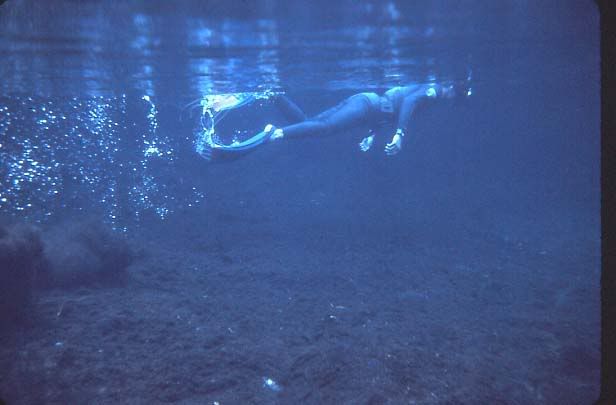Here's a side shot of the effectiveness of the scoop fins:

The straight blade fins are pretty good, but do have that "dead area," which is an area where the water does not provide any propulsion. It is an area just beyond the toes, before the blade bends and provides an angle to the direction of travel. The whole idea of the Jet Fin was to use that dead area, and provide a second blade for it to function. The scoop fin captures that water and channels it to the rear. The split fins do the same, because of the density of the water, but loose some efficiency as some of the water escapes between the blades.
SeaRat

The straight blade fins are pretty good, but do have that "dead area," which is an area where the water does not provide any propulsion. It is an area just beyond the toes, before the blade bends and provides an angle to the direction of travel. The whole idea of the Jet Fin was to use that dead area, and provide a second blade for it to function. The scoop fin captures that water and channels it to the rear. The split fins do the same, because of the density of the water, but loose some efficiency as some of the water escapes between the blades.
SeaRat



